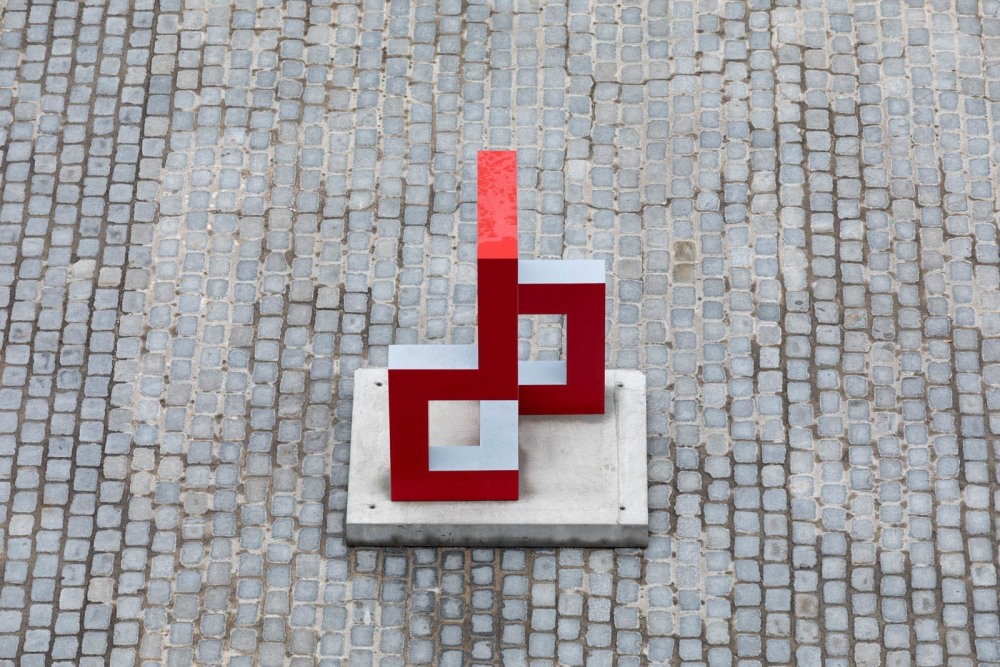
From September 2018, Garage Square will be occupied by a newly commissioned, large-scale installation by Damián Ortega. His first solo presentation in Russia, The Modern Garden will be a place for meeting and interpreting the various implications associated with the legacy of modernism, park sculptures, and the recyclable nature of materials.
Approaching the Museum from Garage Square, visitors will see around thirty minimal, modernist sculptures. Ortega has taken various commercial logos and transformed them into three-dimensional objects made of plywood, concrete, and metal. Modernist-inspired graphic design is the perfect medium for conveying ideas of progress and new technology at the service of large companies and corporations. Ortega is interested in the transformation of modernist aesthetics—and of the modernist moral imperative—into an instrument.
Ortega’s translation of graphic design into sculptural language involves more than simply utilitarian transformation. The artist plays with the notion that while a logo is a pictogram representing a particular company, a sculpture is an abstract body with specific architectonics and surfaces. Operating between these two definitions, Ortega’s sculpture becomes much more than logos on paper, just as the Garage building after its transformation by Rem Koolhaas and OMA began a new existence based on the ethics of ecology and careful treatment. When installed in front of the Museum, the work establishes a dialogue in the public space, which has been populated by Ortega with modernist sculptures of symbols and abstract signs based on corporate logos.
The sculptures are located on the square in a fragmented order that characterizes Ortega’s work. The sculptures expand beyond their own individual limits and expand into the diversity that occupies the space. They can be read from above as an architectural message, an agglomeration of elements that combine to look like a city, or at least a prototype thereof. The ground-level view equips the modern visitor wandering in between the objects with the optics of a flȃneur strolling through a traditional European sculpture park. The only difference is that Ortega’s objects, rather than creating a decorative frame for a walk (as in the Summer Garden in St. Petersburg or the Tuileries Garden in Paris), encourage active meditation, recognition, and interaction with the meanings and contexts left here by the artist. The Modern Garden reflects on sculpture itself and questions its monumental character in the public space.
This project is organized in collaboration with kurimanzutto, Mexico City.